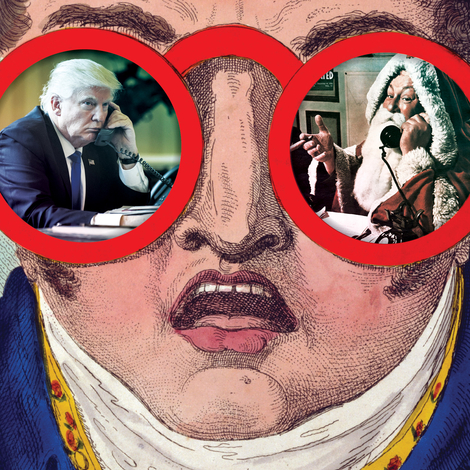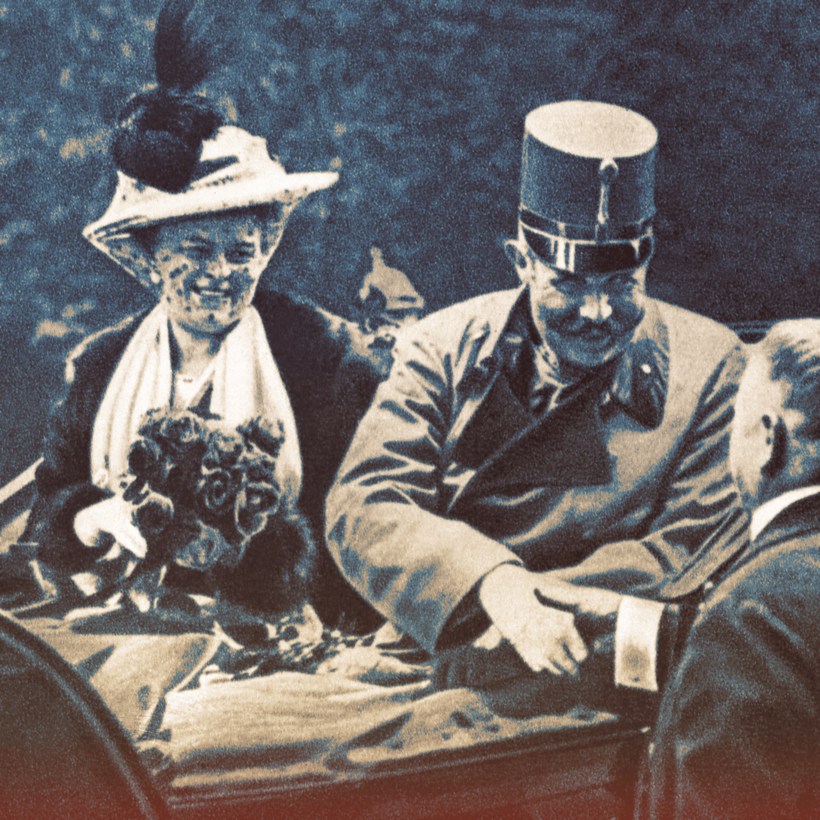Of all the counterfactuals that fascinate amateur historians, few are more poignant than the events of June 28, 1914. When the Archduke Franz Ferdinand and his wife, Sophie, drove into Sarajevo, the capital of the Austro-Hungarian province of Bosnia-Herzegovina, things could have unfolded very differently.
Having survived a botched assassination attempt by Bosnian Serb nationalists, the archduke and his wife were driven to the town hall for lunch. There, completely unexpectedly, they decided to change their program and visit the wounded in hospital. But nobody told their driver, who turned the wrong way up a side street. That meant he had to reverse around a corner — the very corner where another would-be assassin, Gavrilo Princip, was loitering miserably outside a delicatessen. We all know what happened next.
Had the couple stuck to their original schedule, would the world be different today? Was a colossal European conflict coming anyway? Were the great continental empires always likely to fragment, as nationalism corroded the old loyalties? Were the Habsburgs and Romanovs always destined for the scrap heap of history? Or, if Franz Ferdinand had lived, might the United States of Greater Austria, his dream of a federal superstate in central Europe, still be going strong — and would Adolf Hitler have died in obscurity as an impecunious postcard painter?
These are the questions hanging over Nick Lloyd’s excellent history of the Eastern Front between 1914 and 1918, an extraordinary saga of incompetence, chaos and utter horror. This is the First World War from a refreshingly unfamiliar angle, with Austrian, German and Russian armies blundering wildly across a vast, flat landscape of marshes and grasslands, in which the front lines ebbed and flowed with dizzying speed.
His narrative sometimes feels like the Thirty Years’ War with machine guns and barbed wire: at one point Lloyd, a historian at King’s College London, likens the rival armies to “marauding bands of medieval peasants, stripping everything of value from the land they marched through, burning villages, stealing cattle and trampling crops”. Indeed, for sheer horror the campaigns in the south and east easily matched anything in France or Flanders. “We are no longer men,” one Italian soldier wrote; “we are one with the earth … Our clothes, our equipment are a heap of mud … We look our companions in the face: they look like ghosts; they look at us: we look like ghosts to them.”
This is the First World War from a refreshingly unfamiliar angle, with Austrian, German and Russian armies blundering wildly across a vast, flat landscape of marshes and grasslands.
One of the great strengths of Lloyd’s account, a masterly synthesis of sources from various countries, is that unlike many of the war’s participants, he never loses sight of how it all began. His chief protagonists are the Austrians, who kicked the whole thing off a month after Franz Ferdinand’s murder because, entirely understandably, they felt they had no choice but to respond to Serbia’s provocations.
Yet, as Lloyd shows, the Austro-Hungarian army was such a basket case, with different units speaking entirely different languages, that even a limited campaign against the Serbs was too much for it. Having occupied Belgrade, it was forced to pull out in December 1914, retreating toward its own border in a state of shambolic disarray.
“Of the 12,000 officers and 450,000 other ranks who had fought in the Balkans,” Lloyd notes laconically, “273,000 had become casualties by Christmas.” So in a cosmically bleak irony for the Habsburg dynasty, a campaign launched to prop up their empire ended up as an invitation to other predators, such as Romania and Italy, who promptly piled in for a share of the spoils.
The remarkable thing, though, is that the Austrians’ rivals were no better. The story of Russia in the Great War has been told many times, and Rasputin, Lenin, Nicholas and Alexandra make their traditional appearances, but the sheer incompetence of the tsar’s commanders still takes your breath away. Again and again they drove their men through mud and water toward the enemy lines, only to find themselves facing barbed wire and machine-gun posts. So back they went, soaked and sobbing, with no boots and no food. Then the next day they tried again. You can see why so many turned to the Bolsheviks, the only party that promised them peace.
“We look our companions in the face: they look like ghosts; they look at us: we look like ghosts to them.”
For cynicism and profligacy, though, it’s the Italians who really stand out. As Lloyd reminds us, they were supposedly bound by treaty to Germany and Austria-Hungary, but switched sides in a shameless attempt to grab the Tyrol and northern Adriatic. As late as July 1914 the chief of the Italian general staff, Luigi Cadorna, was still working on a plan to attack France in concert with the Germans. But when he presented it to his political masters, they asked him to “prepare for war against Austria” instead.
In a hotly contested field, Cadorna emerges from Lloyd’s book as the general you’d least like to see waving you into battle. Suffused with self-belief, this product of the Piedmontese aristocracy put his faith in “the effectiveness of the bayonet”, despite all evidence to the contrary. In barely two years he threw his men into 12 different Battles of the Isonzo, sending them up bare limestone ridges in baking heat to dismantle barbed wire with their bare hands. As one of his opposite numbers rightly remarked: “It was sheer hell.”
Lloyd’s book is so tightly focused on the battlefields that readers may yearn to hear more about life on the home fronts. Although he tells us that, say, the Austrians were starving or the Czechs were restive, such things generally happen offstage. But he doesn’t get too bogged down in military detail, and is always aware of the wider political picture.
Unlike many of the war’s participants, Nick Lloyd never loses sight of how it all began.
Perhaps unexpectedly the only figure who emerges well from his account is the Emperor Karl, the last Habsburg monarch, who succeeded his elderly grand-uncle Franz Joseph in November 1916. Most historians dismiss him as a pallid irrelevance; Lloyd, quite rightly, takes him seriously.
Unlike almost everybody else, including his generals, Karl knew the war was a disaster and immediately tried to end it. As early as January 1917 he tried to open peace talks through his Belgian in-laws, but the Allies demanded impossible territorial concessions. It’s interesting to consider what might have happened if they had taken the deal. A Europe with the Kaiser still running Germany and a reformed Austro-Hungarian empire might not have been perfect. But would it have been worse than what really happened?
For as Lloyd points out, when you tell the story from an eastern perspective, you realize that the First World War didn’t end in November 1918 at all. As he remarks, it simply “mutated into another series of rolling conflicts that continued to ravage lands that had known nothing but suffering and strife for years”, from Finland, Estonia, Russia and Ukraine all the way down to Hungary, Romania, Greece and Turkey.
A cynic might say that war is a constant in human history, and that some of these conflicts would probably have erupted anyway. Even so, you can’t help wondering how many millions of people might have lived longer, happier and more peaceful lives if, on that sunny summer afternoon in Sarajevo, Franz Ferdinand’s driver had gone the other way.
Dominic Sandbrook co-hosts the podcast The Rest Is History and is the author of eight books, including Adventures in Time: The Six Wives of Henry VIII

